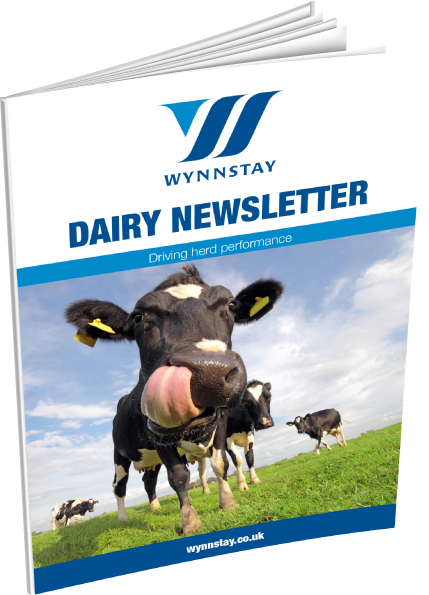Over the past few years, livestock agriculture has been under increasing scrutiny due to its perceived ethical and environmental impact. Dairy production is at the forefront and seen by campaigners and activists as a polluting industry and emitter of huge greenhouse gas emissions (GHG). Most of their theories and preaching are inaccurate and not only causes a financial impact on our potential markets, but a huge psychological impact on our industry; British dairy farmers produce a wholesome and nutritious product only to be branded in a negative light by the media.
What are the true facts about the sustainability and carbon footprint of UK produced milk and what can we do to further improve it?
UK agriculture contributes to 10% of the UK’s GHG emissions, with dairy representing 2-3% of this. Meanwhile the transport and energy supply sectors equate to over 50% of our GHG emissions, and there is a strong feeling that agriculture is being portrayed far worse than these industries by the media.
Cow methane emissions
As an industry, we cannot deny that we do release GHG to the atmosphere, and the most concerning is methane. Methane is a GHG produced from ruminants through enteric fermentation and is belched out as the rumen microbial population breaks down the fibre in the rumen for digestion. Methane is considered 34 times more potent than CO2 in terms of its global warming potential, however many don’t consider that methane only has a cycle of 10 years whereas CO2 will last in the atmosphere for hundreds of years. As ruminant methane emissions are also part of the natural carbon cycle there is no net increase in carbon in the atmosphere, as long as cow numbers are not increased, whereas burning fossil fuels does result in a net increase as the carbon that is released was sequestered and stored in the geological past and therefore not part of the current natural cycle. Even though it’s a natural process, we are still contributing to global emissions, and we need to ensure we are reducing or offsetting them to help us reach net zero by 2040.
Read the NFU guide on achieving net-zero by 2040.
The grass and forages we feed to cows sequester carbon through photosynthesis and complete this cycle of methane by storing carbon within soils. Soil and grassland have a huge potential to further sequester carbon and globally, soil stores more carbon than the atmosphere and all the plant material on earth combined. It is our biggest carbon sink!
Well, managed pasture and ensuring the cow's diet includes higher levels of home-grown grass or conserved grass silage, whilst reducing the need to purchase so many concentrates or by-products, could help reduce a farm’s carbon footprint. This is through increased sequestration of carbon from grass growth but also reduced transport emissions from imported feed ingredients. The UK has the natural resources and climate to grow grass, which is the cheapest feed on-farm and has a lower environmental cost than many other places in the world, so we need to make sure we are taking full advantage.


UK dairy production - How do we compare to others?
A new report from Arla, published in August 2021, shows that their farmers are already producing milk with 1.13kg CO2eq per kg of milk which is below the UK average of 1.25kg CO2eq (NFU). Both figures are roughly half the global average of 2.5kg CO2eq per kg (FAO) and demonstrate that UK dairy is already ahead of many countries in the world when it comes to more sustainable production and progressing towards net zero.
Nitrogen is another concern for dairy production. Alongside nitrate losses, there are also ammonia losses which can lead to the release of nitrous oxide, a very potent GHG, which has a global warming potential 298x greater than CO2. There is much we can do in terms of slurry handling and application to reduce ammonia losses, however, there are also huge benefits to feeding less protein and balancing diets for metabolisable protein instead of crude protein. By improving feed efficiency and overall efficiency on-farm we can reduce the emissions per kg of milk produced whilst improving profitability and herd longevity. Therefore, continuing to focus on best practices will be key to lowering our carbon footprint of milk. For example, a study found that by applying Cow Signals® and improving herd health you can reduce your methane emissions by 30%, through increasing the average number of lactations from 2.5 to 5 and reducing age at first calving to 23 months.
Proactive approach to a sustainable dairy industry
To safeguard our industry, we must be proactive in reducing our GHG emissions and lowering our carbon footprint whilst promoting the sustainability of local, British dairy. There may be a lot of negativity in the media but we know the products we produce are to the highest quality, welfare, and health standards and from one of the most sustainable dairy industries in the world.
Top Tips
To improve efficiency and reduce emissions per kg of milk focus on:
- Improving health & welfare (e.g., reducing lameness, metabolic disease, Cow Signals®).
- Improving fertility (e.g. pregnancy rate, 22-24 months age at first calving).
- Improving feed conversion (e.g. optimal nutrition and feed management, more milk from forage).
- Reducing waste (e.g. forage/clamp management).
- Improve soil and grassland management to boost carbon sequestration.
- Improve slurry management and application to reduce emissions.












